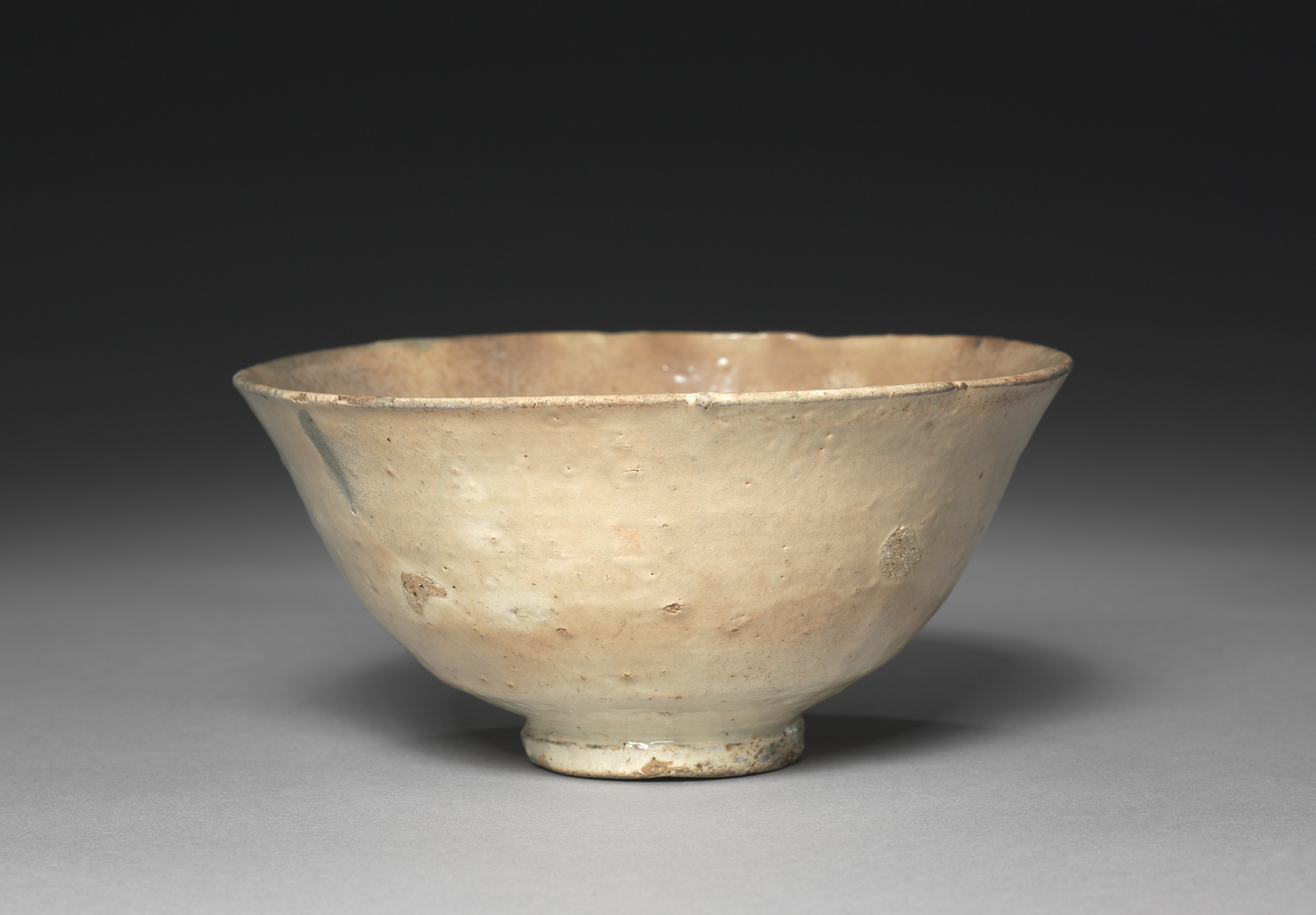The Cleveland Museum of Art
Collection Online as of April 19, 2024

Tea Bowl
1700s
(1392–1910)
Overall: 8.1 cm (3 3/16 in.); Diameter of base: 5.5 cm (2 3/16 in.)
John L. Severance Fund 1991.106
Location: not on view
Did You Know?
This type of rustic-looking tea bowl was produced in one of the kilns established by the trading office (Waegwan) in Buan, southern Gyeongsang province, for Japanese tea bowl collectors who admired the beauty of imperfection.Description
This type of wide-mouthed bowl was used every day in Korea, not exclusively for tea drinking. But when it was introduced to Japan around the early 16th century, its imperfect appearance, which evokes the aesthetics of wabi-sabi, caused it to be repurposed as a tea bowl. Korean tea bowls were circulated as a item of foreign luxury among Japanese military elites. Possibly produced in one of the kilns established by the trading office (Waegwan) in Busan, southern Gyeongsang province, this type of tea bowl was sold to Japanese tea bowl collectors. According to a historical record dated to 1641, one trading boat shipped more than 14,000 tea bowls to Japan.- ?–1991(James J. Freeman, Kyōto, Japan, sold to the Cleveland Museum of Art)1991–The Cleveland Museum of Art, Cleveland, OH
- Jeong, Dong-ju. From Joseon Rice Bowl to Yido Tea Bowl [조선 막사발과 이도다완]. Paju: Hangil ateu, 2012.Hur, Nam-lin. “Korean Tea Bowls (Kōrai Chawan) and Japanese Wabicha: A Story of Acculturation in Premodern Northeast Asia.” Korean Studies 39 (2015): 1–22. www.jstor.orgKang, Mu-Chang. "A Study on the Characteristics of Japanese Made-to-Order Ceramics and the Transition Process of Busan Waegwanyo Kiln - With a focus on Commissioned Tea Bowls [일본 주문 도자기의 특징과 부산 왜관요 변천과정에 관한 연구 - 주문다완(御本茶碗)을 중심으로]." Hankuk dojahak yeongu 17, no. 3 (2020): 5-19.
www.dbpia.co.krHeo, Hyun-Jung. "Resource Supply and Demand of Waegwanyo in the Late Joseon Dynasty [조선후기 왜관요의 자원 수급]." Hangdo busan no. 39 (2020): 205-239. www.dbpia.co.kr - {{cite web|title=Tea Bowl|url=false|author=|year=1700s|access-date=19 April 2024|publisher=Cleveland Museum of Art}}
Source URL:
https://www.clevelandart.org/art/1991.106